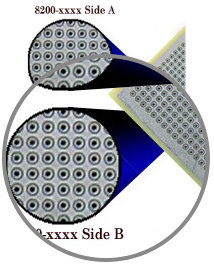Unfortunately, the spacing of the rows in a 64pin DIL is too tight to fit a 144 TQFP between them. Unless you decapitate a few pins as John Kortink did in his ReTuLa product.
Here's a sketch:

As you see, this offers a 64 pin DIL, a 128-pin shielded option with 64 I/Os, and a 40-pin DIL option(*). I don't know if it's routable. (It's a pity the RAM pins are too tight to allow routing between them.)
I wonder if this 64/128 pin approach will be better mechanically than the 120-pin square approach, which might be nearly impossible to unplug?
I have to say, I don't believe in the absolute need for these super-short RAM busses. Example: XO-1 runs a 4-chip SDRAM bus at 166MHz. An inch or two shouldn't be an issue. Maybe EEye's experience will tell us something, when he gets to that stage.
Cheers
Ed
(*) For the 40-pin DIL I'd ideally like to add level converters... they come in 6.2mm or 4.4mm width packages. Placeable, but I'm not sure about routeable. See page 16 of the GODIL user guide for some usage details.
 Edit, leaving the old URL to rattle their cage:
Edit, leaving the old URL to rattle their cage: